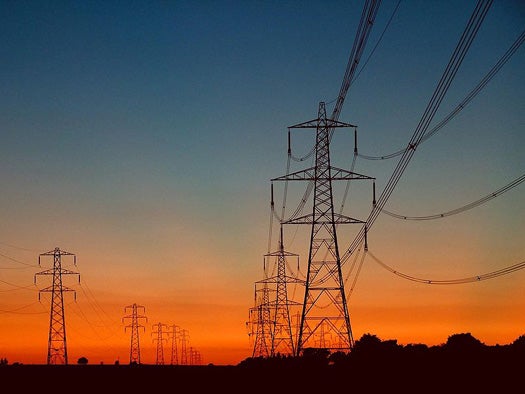DOE Exploring Superconducting Magnet Scheme for Grid Energy Storage
Throwing cost concerns and caution to the wind, the U.S. Department of Energy is getting behind a project that aims...

Throwing cost concerns and caution to the wind, the U.S. Department of Energy is getting behind a project that aims to prove that superconducting magnetic energy storage (SMES) can work at the grid level. Via a $4.2 million ARPA-E grant, Swiss engineering firm ABB and a handful of partners plan to build a 3.3 kilowatt hour proof-of-concept SMES prototype that, if all goes well, could someday be scaled to megawatt-hour capacity.
SMES is, at its heart, a means to make a battery out of magnetic fields. The DOE is interested in the technology because it could be used to create huge facilities that would efficiently store massive amounts of electricity for use when renewable energy sources like wind and solar fail to meet grid demand. SMES devices work by storing electricity in huge magnetic fields generated by running direct current through superconducting wires. Their special geometry allows them to hold vast amounts of power while using very little energy to maintain the field.
They are also very, very expensive. Prohibitively expensive, that is.
But SMES technology does have a lot of potential if, perhaps, it can be scaled to the point of being cost competitive with lead-acid batteries and other means of storing up large amounts of power. ABB, Brookhaven National Lab, the University of Houston, and superconducting wire manufacturer SuperPower are collaborating with the ultimate goal of creating a one- or two-megawatt, grid-scale device that can compete with other energy storage schemes like batteries, pumped hydro (pumping water uphill to create potential energy for hydro plants) and compressed air (storing air in underground caverns at pressure).
Why bother with SMES if there are already cheaper ways to store energy? For one, SMES can be deployed anywhere unlike pumped hydro (which at the very least requires a hill) or compressed air (which requires an underground cavern). SMES devices can also be discharged rapidly and entirely, a critical quality for energy storage facilities that will be expected to quickly stabilize grids when wind or solar resources experience regular and sometimes precipitous plunges in output.
Many critics think SMES is unfeasible, as all that superconducting wire is really, really pricey. But what are organs like ARPA-E for if not for doing things others say are impossible (ARPA-E, for the uninitiated, is like the DOE’s DARPA)? If the collaboration can pull it off, SMES could become a critical component in those smart grids of the future that we hear so much about yet see so little of.